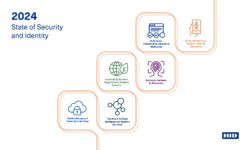The Implications of Autonomous Technology
In the age of the digital revolution, physical security faces a daunting task as the acceleration of new and potentially susceptible technologies continue to grow.

In today’s day and age, the meaning of security has taken on new, interesting and sometimes scary meanings. New threats that have never been seen before plague our security professionals.
Many of us tend to create an image in our mind when they think of security. Some people think of a police officer against “traditional” criminals, while others may think about security against online threats such as malware, online bullying or disclosure of private files, ranging from the embarrassing to life-altering and damaging.
And in recent times, most of us also think of security against cowardly terrorist attacks who use everyday objects to achieve their goals. What is of particular interest to myself is the blending of all of these categories, and where we might be headed.
For instance, most of us have seen, used or maybe have even been harassed by a drone. Personal drones are fun to use, but they also pose hazards if not used appropriately — airports, prisons, stadiums and others struggle with drones flying into their airspace unauthorized.
Most of those incidences are honest mistakes, but there are some that are willfully nefarious — think about delivery of contraband material into prisons or across borders. There are several ways that are being pursued to reduce those drones — either through geofencing (meaning the drone manufacturer creates imaginary fences in the drone software so it won’t fly into certain areas), or through the use of anti-drone technology.
I like to compare both of these technologies as similar to the lock on my house — it is there to keep the honest people out, but that’s about it. Geofencing can be quickly disabled, while anti-drone technology is mostly only effective against a very short list of commercial drones.
What we see in the drone space can also serve as a great lesson as to what may come in other technologies that are already on the horizon (or even closer).
Let’s think for a second about driverless cars. I am a huge proponent of driverless cars — I do not enjoy sitting in rush hour traffic for hours at a time. I do not enjoy the act of driving. I would much rather take a cab or public transportation. I cannot wait to be able to read a book or get a little work done while my car drives me to work.
But I also think about the implications that this new technology will provide. In recent months, we’ve seen several attacks by lone wolfs, driving cars into crowds of people, causing enormous injury and fatalities. We usually know who the suspect is, and he is at least held responsible. But what if this type of attack could be carried out remotely?
Could a tech savvy terrorist hack his way into the control system and reprogram this type of car to carry out the attack? Would we ever have a chance to catch the responsible party? And how much more damage could they cause — instead of a single person driving a single car, one person could reprogram dozens of cars simultaneously, and maybe even load it with homemade explosive devices — a truly chilling scenario.
So how can we prepare for this? As with anything in security, this is a very difficult question to answer. We all want security and we want to feel safe. But at the same time, we also want to protect our privacy.
Let’s look at the NSA Snowden scandal for a second — collecting metadata from private citizens. The reveal of the program caused a huge uproar, and privacy advocates lined up in masses to shut it down.
At the same time, when there is an attack, most people are perplexed why our great nations intelligence community wasn’t prepared or didn’t know about an imminent attack.
So, going back to the driverless car example — imagine you know own such a car. Day in, day out, it is used to get you from and to work, shopping, etc. But all along, this car sends data back to huge centers that track its routes, addresses, sensor data, etc.
How would you feel? Would you feel comfortable knowing that some analyst can retrace your steps? Tie in your smartphone to this — now someone can have perfect information — which mall or store you drove to, which stores you visited, add the credit card info, and one even knows what was purchased—a little scary.
Now imagine that a criminal does the same thing — could this data be accessed to predict which victims are low risk and high payback? You could be watched for weeks to trace all of your habits and find your weakness.
On the flipside, this also allows us to find the criminal — we might know where he went, what store he went to, and what was purchased. Could that predict an imminent attack? Could it be prevented? And if he uses a driverless car, could we at least shut the vehicle down completely?
In modern security, the division between physical and cybersecurity is disappearing at an ever-increasing speed, and we may find whole new job roles pop up, such as detectives that specialize in robotics and AI crimes. It is never too early to think and discuss these topics — as we all know, technology is growing at an exponential speed — and both Moore’s and Murphy’s Laws are alive and well.
Andy Von Stauffenberg is CEO of VStar Systems.
If you enjoyed this article and want to receive more valuable industry content like this, click here to sign up for our FREE digital newsletters!

Security Is Our Business, Too
For professionals who recommend, buy and install all types of electronic security equipment, a free subscription to Commercial Integrator + Security Sales & Integration is like having a consultant on call. You’ll find an ideal balance of technology and business coverage, with installation tips and techniques for products and updates on how to add to your bottom line.
A FREE subscription to the top resource for security and integration industry will prove to be invaluable.













